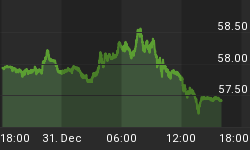The Fed has decided, last week, to extend its quantitative easing (QE) policy. After « Operation Twist », which consisted in selling short-term bonds in order to buy long-term bonds, and thus drive the latter down rate-wise, the US central bank is back with pure monetary creation, and to quite an extent : up to $85B a month, i.e. $45B of Treasury bonds and $40B of mortgage-backed securities (MBS). The goal, clearly, is to help the State finance its abyssal deficit and to help a banking sector still knee-deep in the housing crisis. At the same time, the Fed has restated that the base interest rate would remain at the lowest possible.
What is most notable is that the Federal Open Market Committee (FOMC) has stated that this policy would be maintained « for at least as long as it takes to bring the unemployment rate below 6.5% ». Now, what does unemployment have to do with it? Is the Fed trying to take over the role of the Labour Department? A little bit of history might help to understand this statement.
In 1978, the United States is in full crisis, unemployment shoots up and Jimmy Carter is thinking about his re-election. What can he do to show his electorate he's taking charge? It will be the Humphrey-Hawkins Full Employment Act, redefining the Fed's mandate, which now was to contain inflation while aiming for full employment. A government can act towards unemployment because it has the necessary tools and levers (regulation or lack thereof, lowering taxes etc.), including a central bank! All said central bank can do is to be less and less rigorous in its fiscal policy to achieve this goal. Thus, this decision is a purely demagogic and Keynesian one (they go well together). What president would dare abrogate it? None so far.
The only Fed president who dared to go against this was Paul Volker, in 1979, who raised the base interest rate to close to 20% to kill inflation, which provoked a short crisis but then ensured the necessary bases for the growth of the 80-90's and a lower unemployment rate. But since then, everytime a storm is brewing (the 2000 dot.com bubble, the crisis since 2008), the Fed's presidents, Alan Greenspan and now Ben Bernanke, throw all rigor out of the window and go ahead with a maximum of monetary easing, under the pretext of not worsening the crisis and keeping unemployment under control. However, this policy has only produced fictitious growth (2000-2007) or no growth at all (since 2008). But this policy produces also... a lot of money, in increasing amounts, which goes totally against the role a central bank should play.
This stupid law and its application just show how much we are living in a confused intellectual state. It also gives the Fed president an all-too-powerful feeling... very dangerous! And the real laws of economics, not the ones voted by demagogic politicians, but those taught by history, show us that printing paper money in excess always leads to hyperinflation... and to massive unemployment. By chasing too many contradictory objectives, we miss them all.
Originally posted at https://www.goldbroker.com/news/fed-policy-quantitative-easing-contradictory-inefficient-167.html on December 20, 2012
















